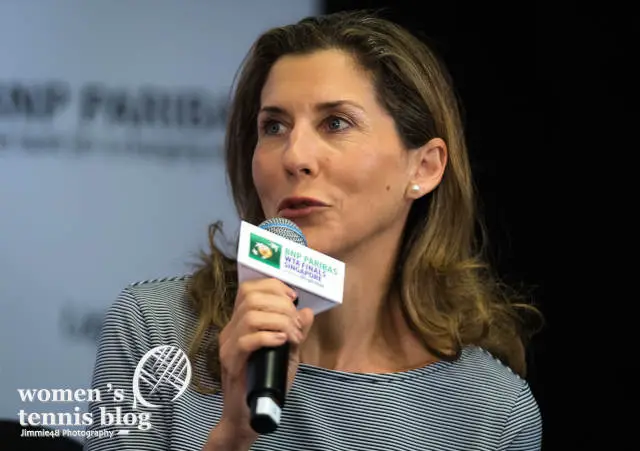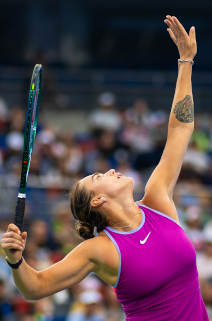It’s no doubt that Monica Seles is one of tennis’ greatest potentials that never fully bloomed and her rivalry with Steffi Graf was undeniably cut short.
Known as the “darkest day in tennis history,” Monica Seles was tragically assaulted in 1993 in what was effectively a career-ending event to a large degree. At just 19 years of age, Seles was already an eight-time Grand Slam winner and was projected to have one of the most successful careers in the history of the sport.

Monica Seles was a teenage sensation
Turning pro at just 15 years of age, Monica Seles won her first career title at the Houston Open in 1989 and also reached the semifinal of the French Open that same year. In her very first year as a professional tennis player, Seles already became a Top 10 player by reaching the world No.6 rank at the year’s end, a truly remarkable feat for someone so young and so early in their career.
This early success set the foundation for what was to come next, as the young Yugoslavian was now in a position to really shake up the Tour. The following years saw Seles go on a 36-match winning streak where she won six consecutive tournaments across the US, Italy, and Germany and even snatched her first Grand Slam at the 1989 French Open.
Between the years 1990 and 1993, Seles went on an absolute rampage of success by winning tournament after tournament and securing eight major titles across the Australian Open, French Open, and US Open, and even grabbing a runner-up for Wimbledon in 1992. In fact, that year in which the Wimbledon title had eluded her, Seles would have secured the Calendar Grand Slam for that season at only 18 years of age.
Monica Seles’ rivalry with Steffi Graf
In her first meeting with the great Steffi Graff at the semifinals of Roland Garros in 1989, Monica Seles fell short in an exciting three-setter match. This was to be the beginning of a rivalry that would span across 15 matches between the two talented players of their era. With a slight but significant age difference between them, Graf certainly had the upper hand in terms of experience, and this showed during their first few encounters.
Indeed, Seles did not secure her first win over Graf until their fourth encounter which took place at the finals of the 1990 German Open. Given she was only 16 and still early in her career, defeating the more established Steffi Graf who at that point was already a Calendar Grand Slam winner was an exceptional feat. More impressively still, Seles repeated this feat later that year on the big stage at the French Open finals, securing her maiden Grand Slam while defeating Graff for the second time in a row.
In total, Seles defeated Graff five times out of the 15 encounters they had on court, with four of those wins being in Grand Slam finals matches. Not surprisingly, it was Graf who prevented Seles from securing the Calendar Grand Slam in 1992 by defeating her at the Wimbledon finals. While Graf may have had the upper hand on the head-to-head, Seles was significantly younger in age and earlier in her career, and there was definitely more potential for growth in her tennis.
Post-attack revival
Despite the stabbing attack of 1993 that would ultimately disrupt her career for the worst, Monica Seles showed enormous resilience to bounce back from the physical and mental trauma of the event. Returning to the courts a couple of years later, Seles returned to competing at the highest level and took on Steffi Graf once again at the US Open final of 1995 and 1996, where she fell short of the winning both titles.
Incredibly, Monica Seles was able to secure one last Grand Slam in 1996 at the Australian Open, making it her first major title win since the stabbing incident. Even though it was her last big title, the nine-time Grand Slam champion showed awesome competitive spirit and brilliant form in the years leading up to her retirement. During this time, she defeated Steffi Graf one more time at the quarterfinals of the 1999 Australian Open, signalling her first win over the German since the attack and once again representing a major milestone in her recovery and journey back to greatness.
What could have been…?
Regardless of how well one can recover from a physical attack, healing the mental pain of such a frightening, life-endangering attack can take a lifetime. Monica Seles is by far one of tennis’ greatest lost potentials, and while this statement may sound pretentious and ignorant of the incredible achievements that she did accomplish, the reality is she was on equal playing fields as 22-time Grand Slam champion Steffi Graf and very likely could have achieved a similar magnitude of success.
In fact, whether Steffi Graf would have secured the number of titles that she did is also up for question and debate. The absence of Monica Seles during her hiatus as well as her loss in form upon her return surely gave Graf the advantage of having fewer obstacles on her path to Grand Slam glory. The fact that Seles managed to beat Graf on the big stage even after her hiatus is a sure sign she had what it takes to have stolen some of the German’s titles during those lost years.
In the game of tennis, all it takes is one significant rival to stop you from winning as much as you otherwise could have had that person not been on the scene. A classic example of this is how Andy Murray fell prey time and time again to the ATP’s “Big 3” during his career. More specifically, had world No.1 Novak Djokovic not been around, Murray may well have had an additional five Grand Slam titles to his name.
Similarly, but in a reverse fashion, the absence of Monica Seles during Steffi Graf’s prime years was definitely a major factor in leading to her enormous Grand Slam title count. Of course, it’s more than possible that Graf would have achieved this feat anyway, but at the very least it would have been that much more difficult.
In the same way that rivalries like “Fedal” help players to shape each other’s abilities and push each other to new heights, Seles and Graf’s rivalry certainly had a similar feeling to it. As we know, Steffi Graf’s early retirement by age 30 was due to a loss in motivation for the sport, so it wouldn’t be far-fetched to speculate that a rivalry with someone like Monica Seles might’ve been the catalyst to prolonging Graf’s career and delaying her retirement.
As far as Grand Slams go, it’s likely that Seles would have won at least a few more, if not a lot more, and Graf surely would have had to fight harder and longer to reach that amazing 22 Grand Slam singles titles.








Finally someone saying this! I have nothing but respect for Steffi, she is one of the GOATs in tennis but part of her success is because of Monica’s absence. Of course, it’s not her fault, but I am just glad someone mentioned this.
Also, Del Potro is probably the unluckiest ATP player in the last 10-15 years and if he hasn’t been through so many injuries and surgeries, maybe the big 3 wouldn’t have 20 grand slams each. Yes, I know this is WTA blog, obviously ???? it’s just that Monica’s story reminded me so much of Del Potro’s.
Ivona are you kidding me? Yes I agree that Del Potro’s career could have been different had he not had so many injuries, however, please do NOT compare what happened to him vs. what happened to Seles!!!!! I would argue that it is Del Potro’s fault he had so many injuries, especially if you compare his career to that of Federer’s. It is the players responsibility to train properly to avoid injuries. Federer was legendary for always being fit and never withdrawing mid match. Djokovic did it 9 times and Nadal 7. Del Potro also never got stabbed in the pack by some lunatic. Best that you don’t respond to this, or any other thread that involves tennis!!!!!!
Why can’t Ivona write what she wants? Who are you to stop him?
For me what he/she has written is very interesting.